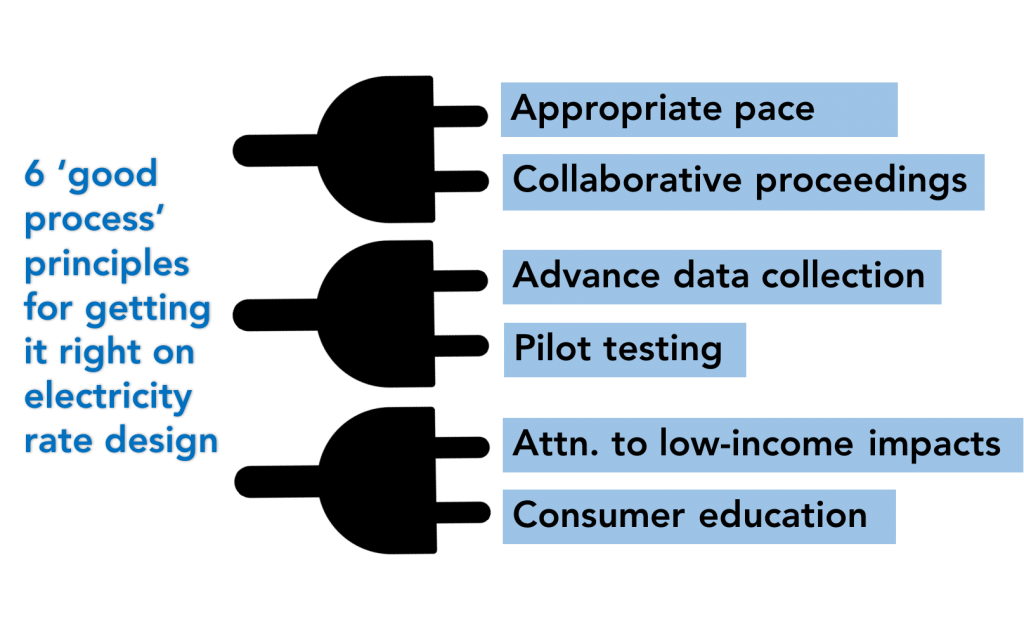 New technology is evolving electricity transmission from a centralized, one-way system to a more distributed, interactive one. This system necessitates new electricity rates, and the National Association of Regulatory Utility Commissioners (NARUC) unveiled this week at its annual summer meeting a draft manual that will help states across the U.S. design them.
New technology is evolving electricity transmission from a centralized, one-way system to a more distributed, interactive one. This system necessitates new electricity rates, and the National Association of Regulatory Utility Commissioners (NARUC) unveiled this week at its annual summer meeting a draft manual that will help states across the U.S. design them.
The Distributed Energy Management Compensation Manual is basically a compendium of rate design options that regulators can consider, and it outlines each option’s pros and cons. NARUC President Travis Kavulla charged his staff with writing the manual – a monumental undertaking – and we commend the organization for this effort.
I was pleased to speak during the Town Hall event at which NARUC rolled out the draft manual, and my remarks focused on one critical need: good rate design process. Choosing the right electricity rate for a state is important, but so too is the process by which regulators arrive at that decision. Early in the document it recognizes, “A jurisdiction will need to identify its current status regarding DER [distributed energy resources], what role it expects DER to have in the future, understand the nature of DER adoption rates, and identify necessary policy developments to accommodate that future.” Now is the time to encourage NARUC to include in the manual a dedicated section that shows states how to build a process for ratemaking that will be sustainable, benefit consumers, and advance in tandem with electricity distribution technology.
NARUC manual’s strengths
Leading up to the summer meetings this week, Environmental Defense Fund (EDF), former public utility commissioners (like myself), and more than 30 consumer, clean energy, environmental advocacy organizations from across the country signed and sent a joint letter to NARUC recommending a common set of principles that each state can apply to identify consensus and get electricity rate design done right for its citizens and businesses. The joint letter identifies six key principles that, to my delight and NARUC’s credit, the draft manual reflects throughout. Here’s where the manual gets it right:
- Appropriate pace: The draft manual acknowledges that once the quantity of distributed resources (small, grid-connected devices, like rooftop solar and energy storage) passes certain levels, there can be significant issues for traditional rate making, utility models, and delivery of electricity. Our letter to NARUC advises and the draft manual echoes that before responding by changing electricity rates, states should “empirically establish at what adoption level [distributed resources] will affect the grid.” The draft manual cautions, “Reforms that are rushed and not thought out could set policy and implement rate design mechanisms that have unintended consequences…”
- Collaborative proceedings: The draft manual also recognizes the difficulty of addressing rate design in rate cases where parties often only address “one aspect of the interaction, cost recovery for utilities or customer compensation on the part of the advocates.” The manual wisely identifies that this approach “separates the conversation and makes it harder to reach an agreement that is beneficial
 for the public.”
for the public.”
- Advance data collection: Throughout, the manual recommends that states use data to drive change, for example where it states, “The utility’s specific characteristics and their most likely reaction to change must be clearly and thoroughly determined before questions and challenges from DER are addressed through rate making changes.”
- Pilot testing: The draft manual further acknowledges that one of the biggest issues, if not the biggest, is a “dearth of empirical data on impacts.” It admonishes, “Regulators should be wary of counting on unsupported, promised benefits and cautious when plausible harm may represent itself.” It states that pilot tests could be the best way forward. However, it concludes, “Whatever the implications of these newer rates may be a regulator must be comfortable with how the changes will interact with their jurisdiction’s unique circumstances before implementing them.”
- Attention to low-income: The draft manual flags electricity-rate impacts on low-income individuals as a special consideration and, in several places, identifies potential impacts of various designs on low-income customers. It also recognizes that many states implement policies to reduce the burden that low-income customers face. In 2014, researchers looked at the “energy affordability gap” for low-income households (the difference between actual energy bills and what is considered affordable) and tabulated it at almost $45 billion nationally. That is an increase of 16 percent from 2011. Rate design change cannot further exacerbate this gap and further work needs to be done in this area.
- Consumer education: The draft manual finds, “These processes are at the vanguard of an anticipated shift” that represents a “steep learning curve for everyone involved.” It recognizes a role for commissions and consumer advocates in communicating and building consensus for, and acceptance of, change “now and prior to the time any rate design change is implemented.”
[Tweet “The Process Priority: Inspiring Good Rate Design for Our Modernizing Grid”]
NARUC manual’s opportunities
While I appreciate the process discussions spread throughout NARUC’s draft manual, I see an opportunity to go further and expressly build upon the good process recommendations. For example, a dedicated section in the manual that guides states during electricity ratemaking for our modernizing grid should expressly address the following:
- How do you establish relevant thresholds for action? What data should be tracked and monitored?
- What kind of data should public utility commissions collect?
- How can utility commissions structure a collaborative process?
- What tools are available to assess impacts?
- What methods are available to mitigate impacts on low-income and vulnerable customers?
- What are the best practices for pilot tests and customer education?
NARUC’s manual is a living document, a first step, offering guidance to states that are transforming our nation’s electricity grid. NARUC is accepting written comments about its draft manual through Sept. 2. EDF’s comments to NARUC will urge specifically integrating good process into the manual, and we hope all stakeholders who play a role in this transition will do the same to help achieve a healthy electricity system and related economies.









